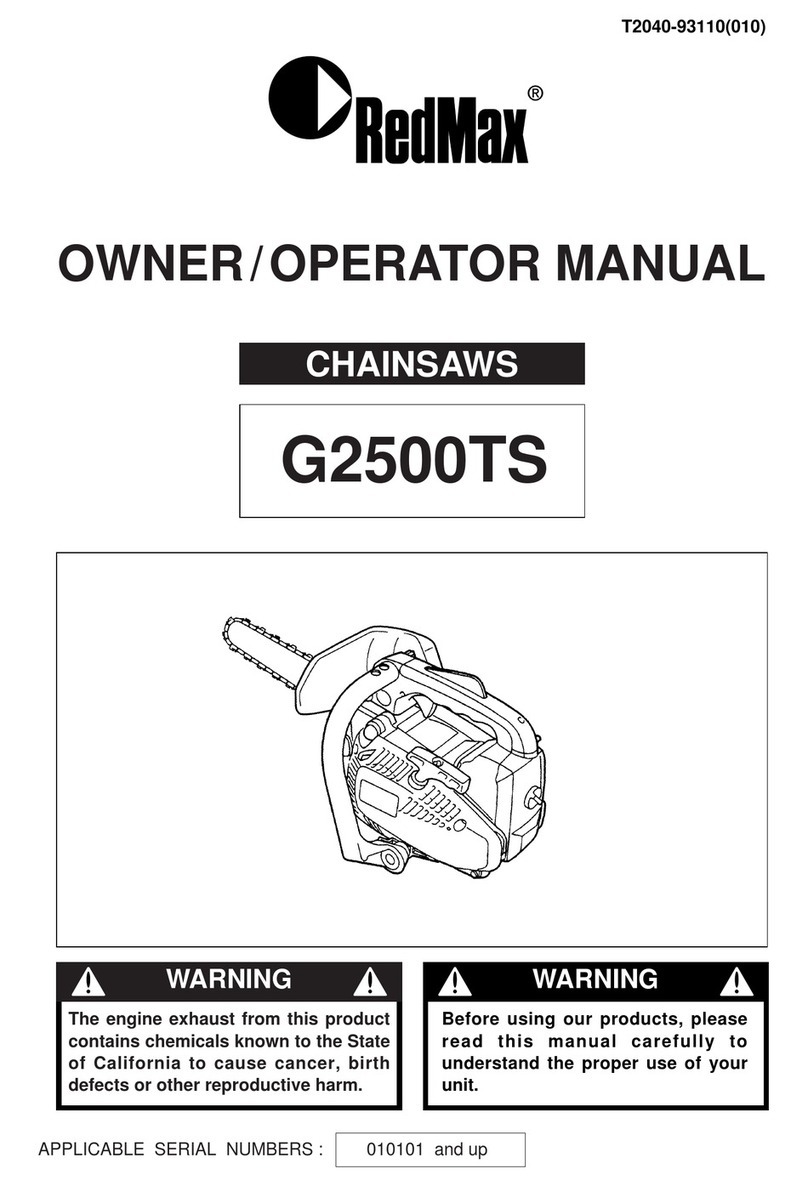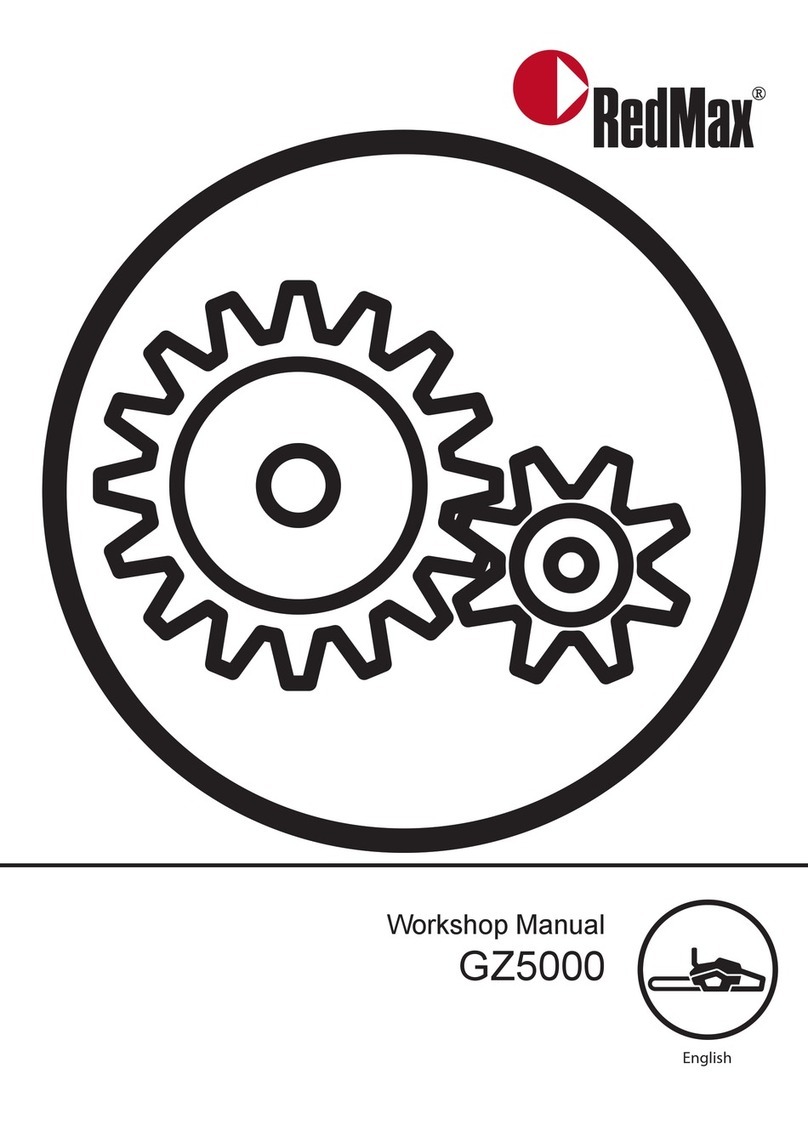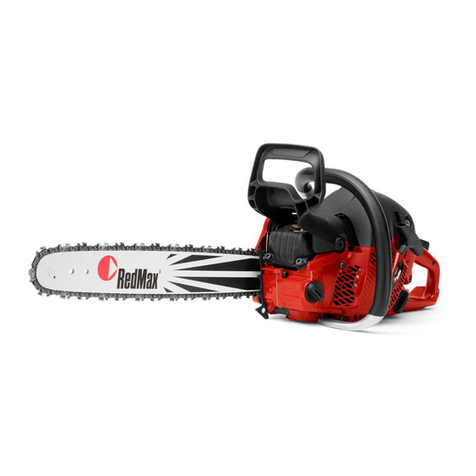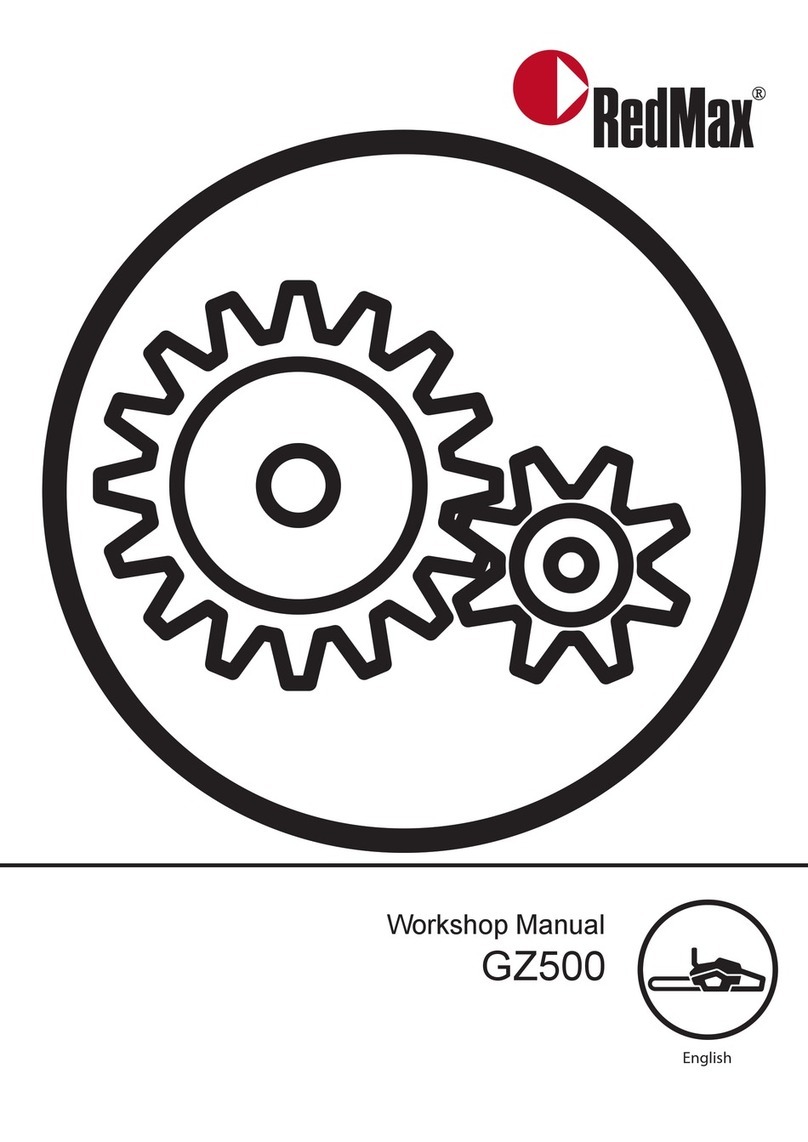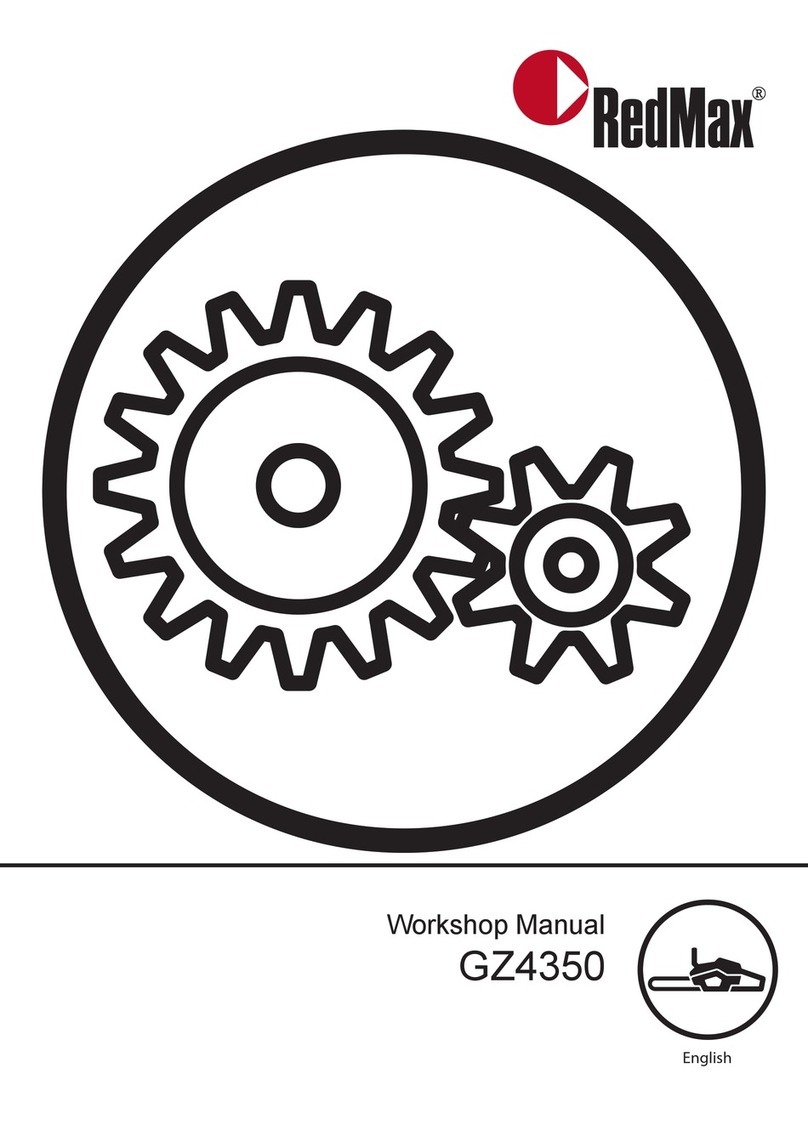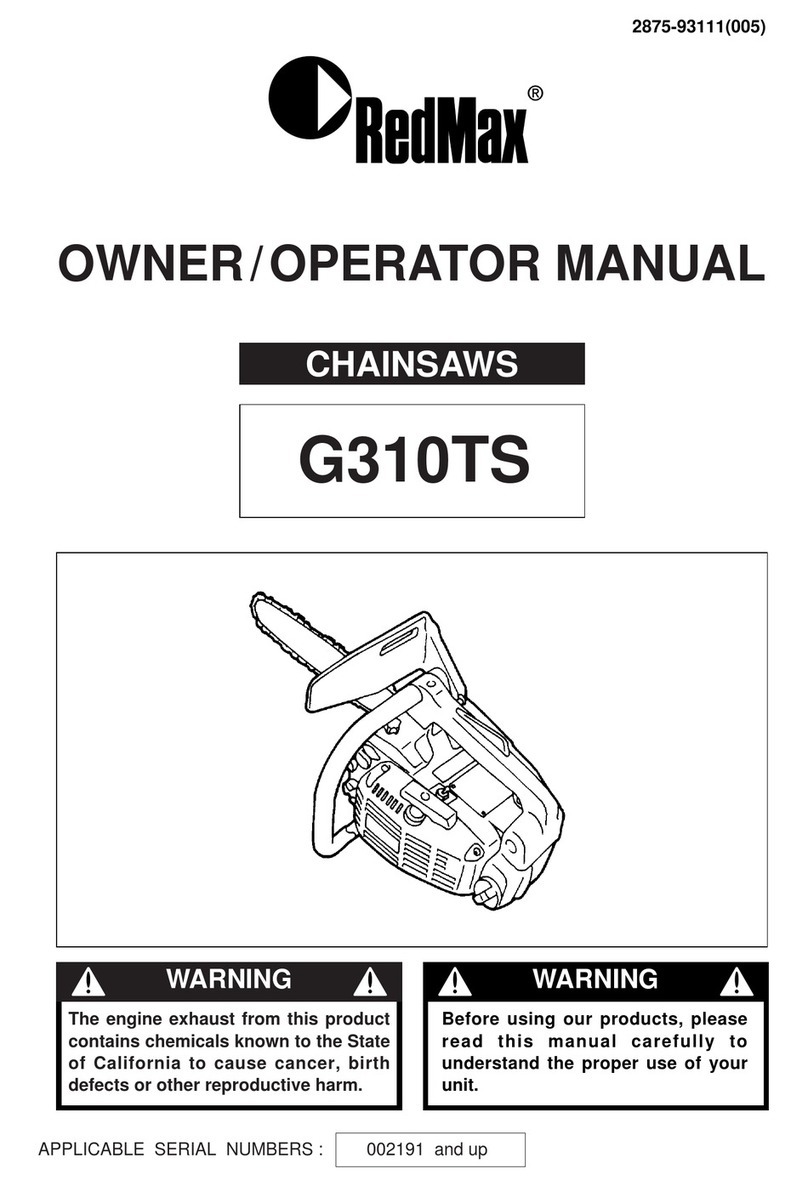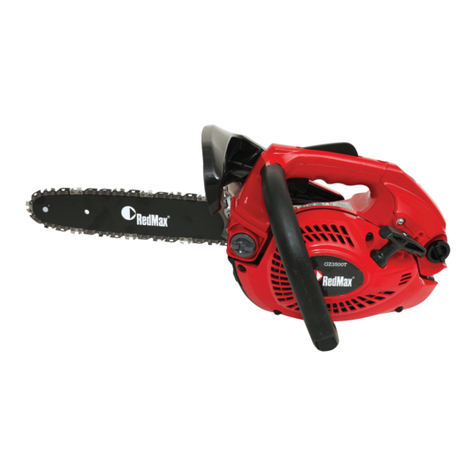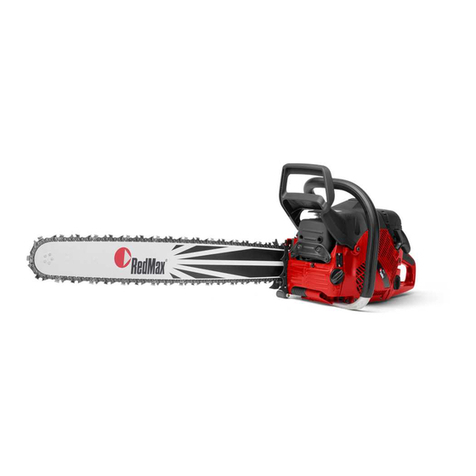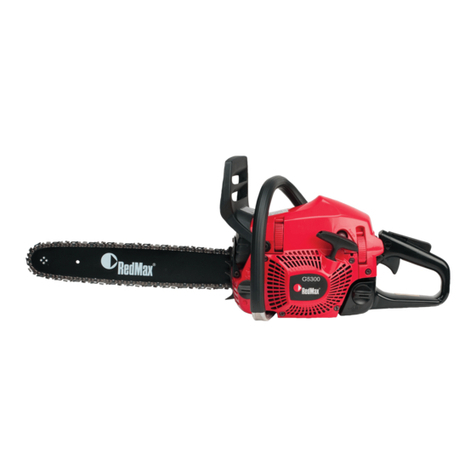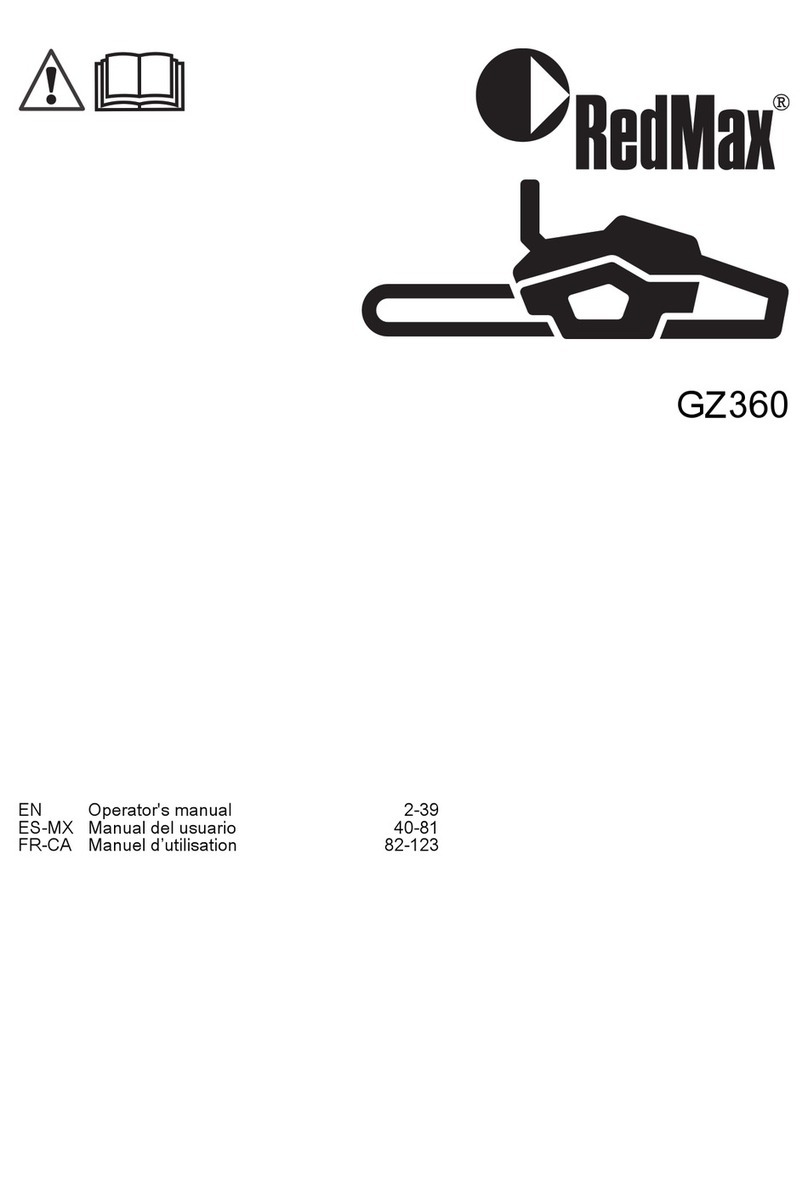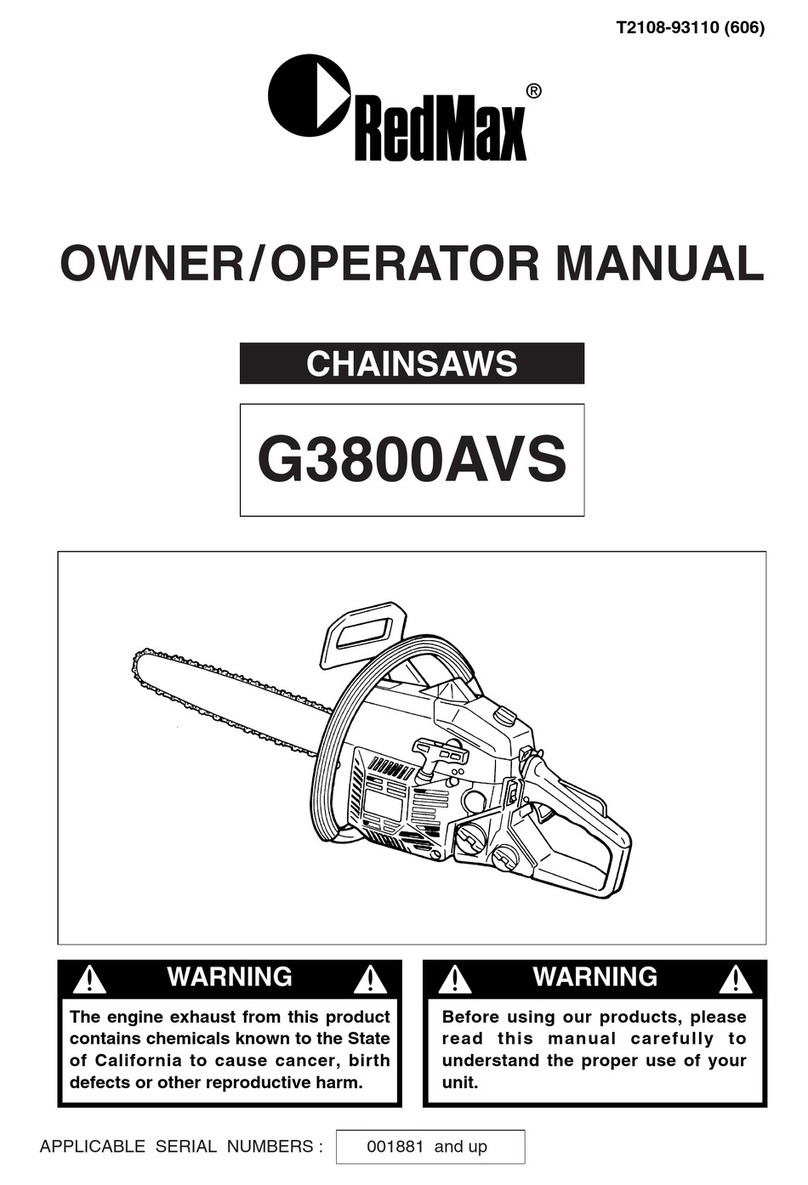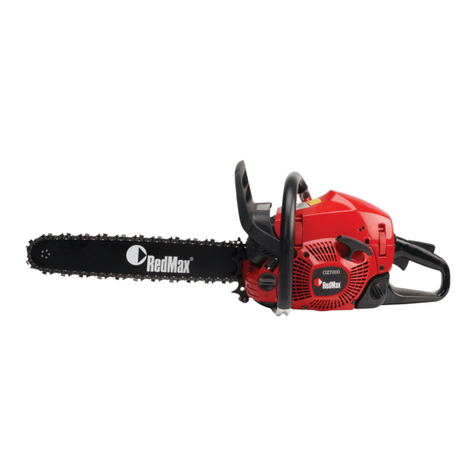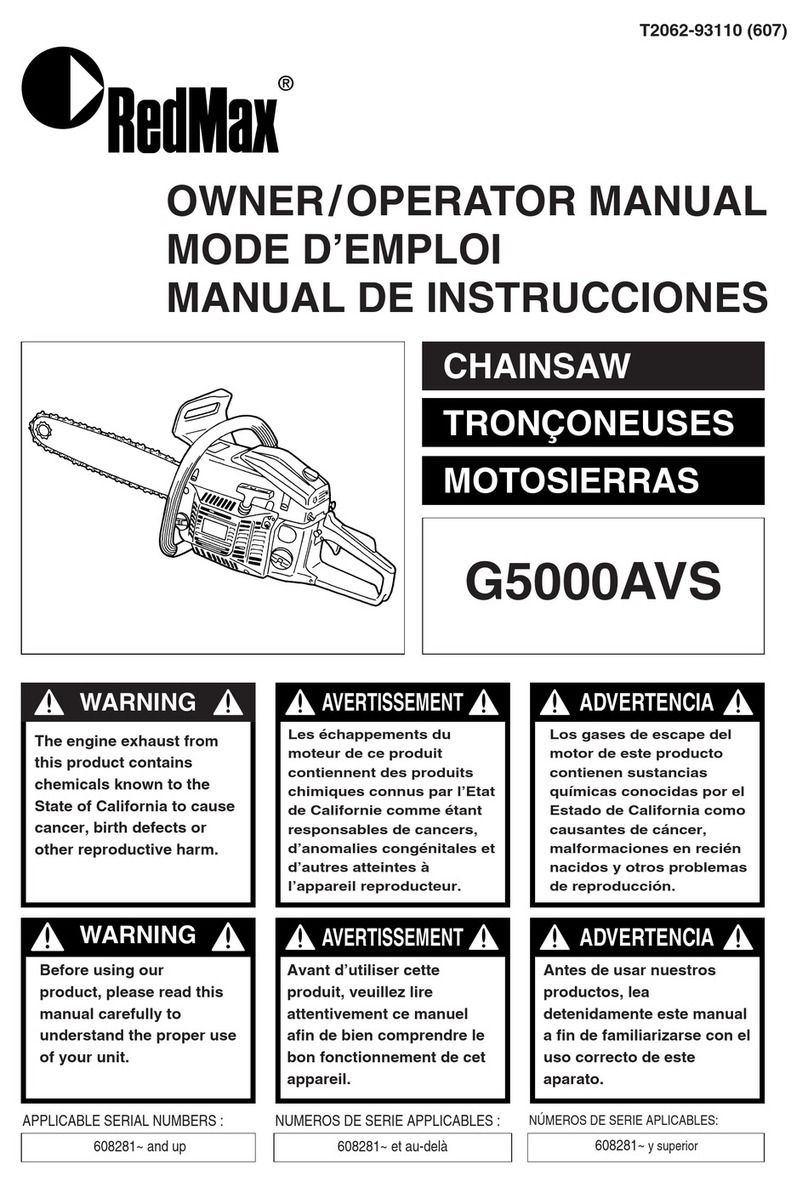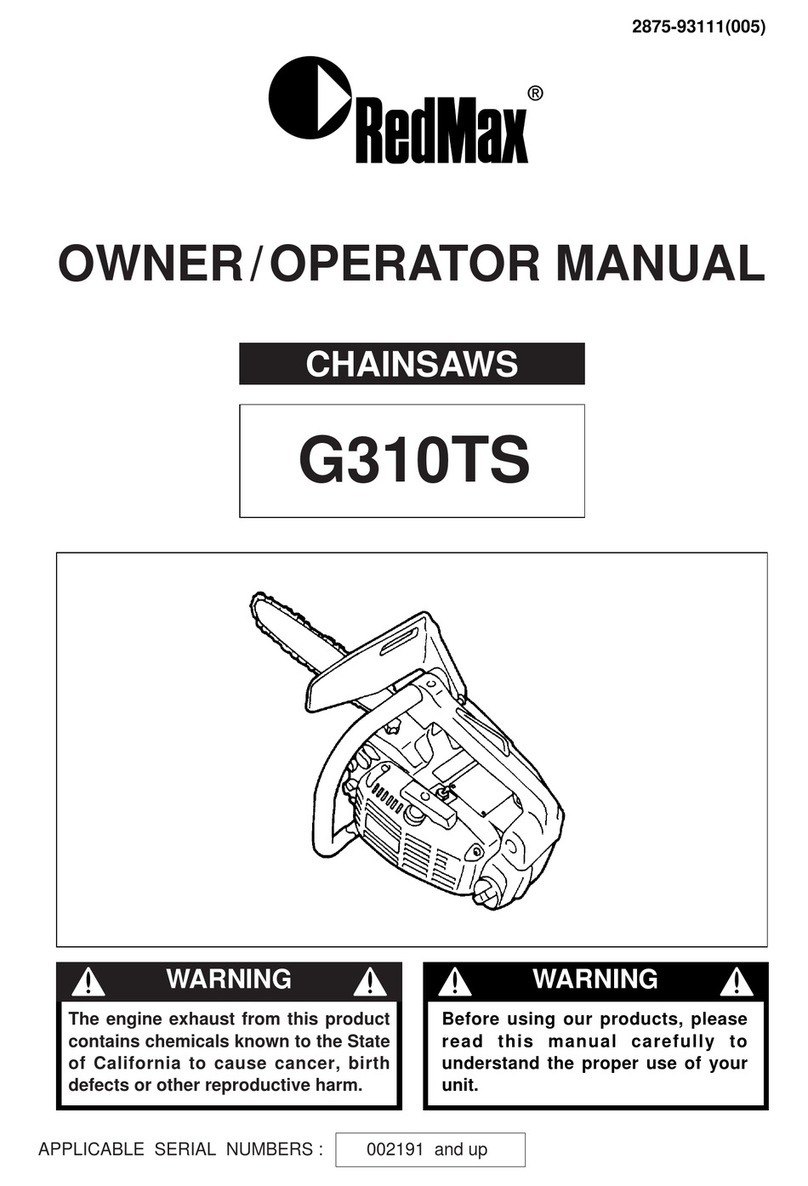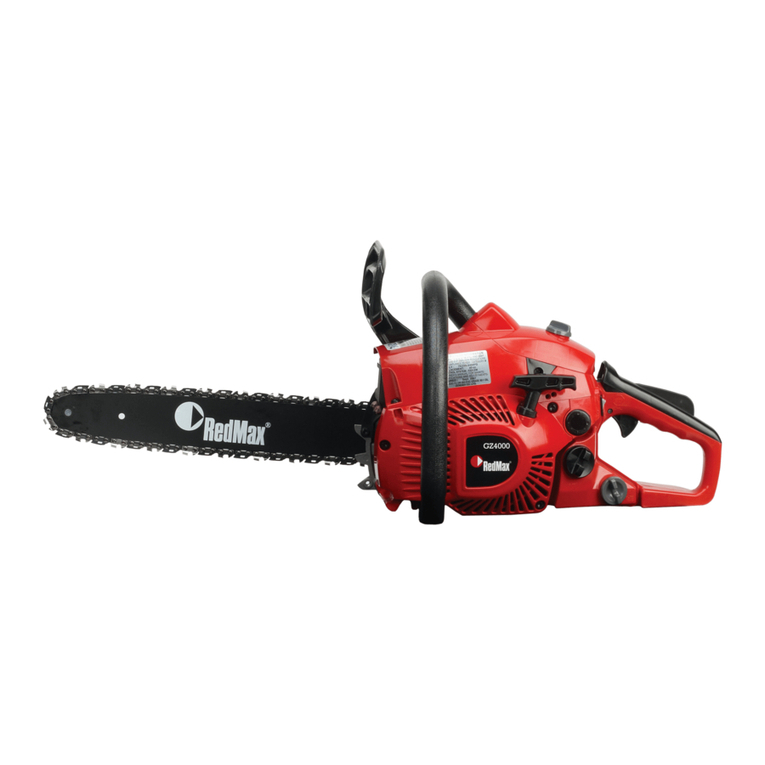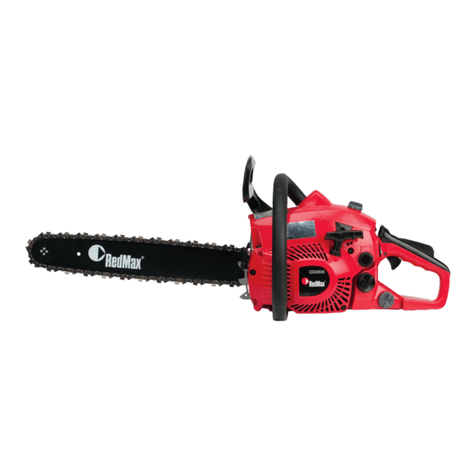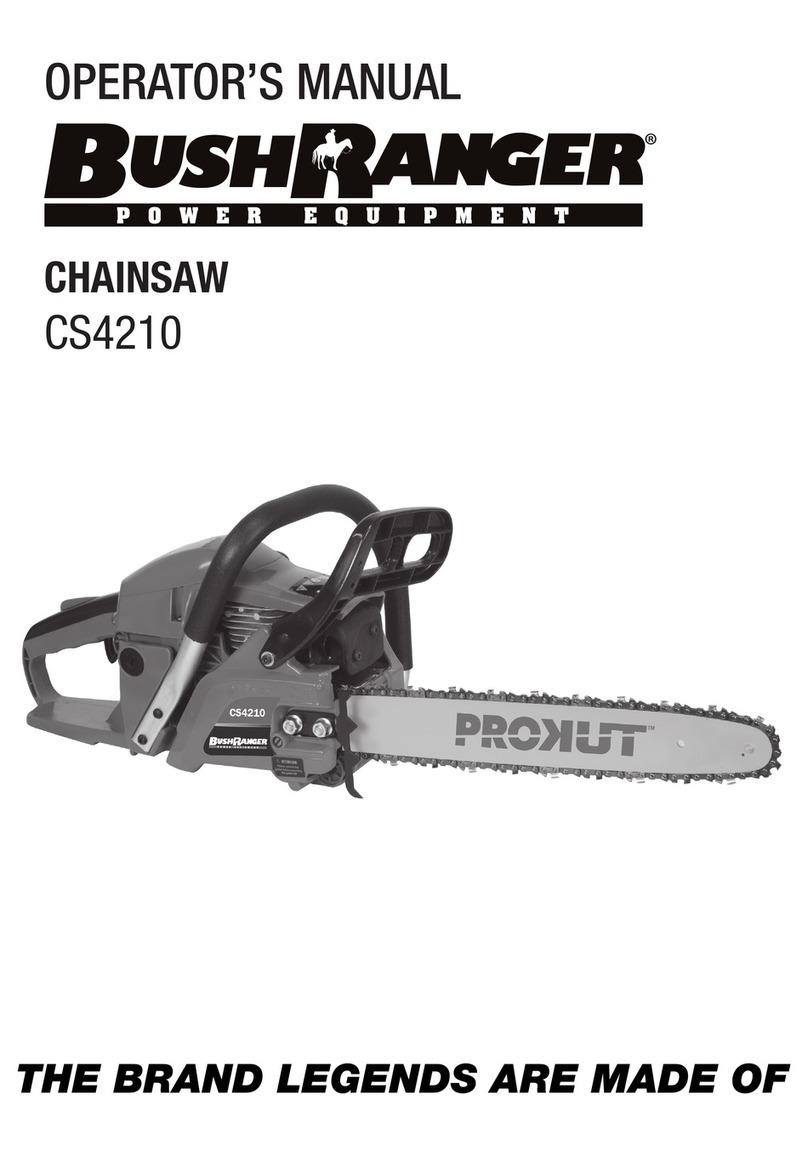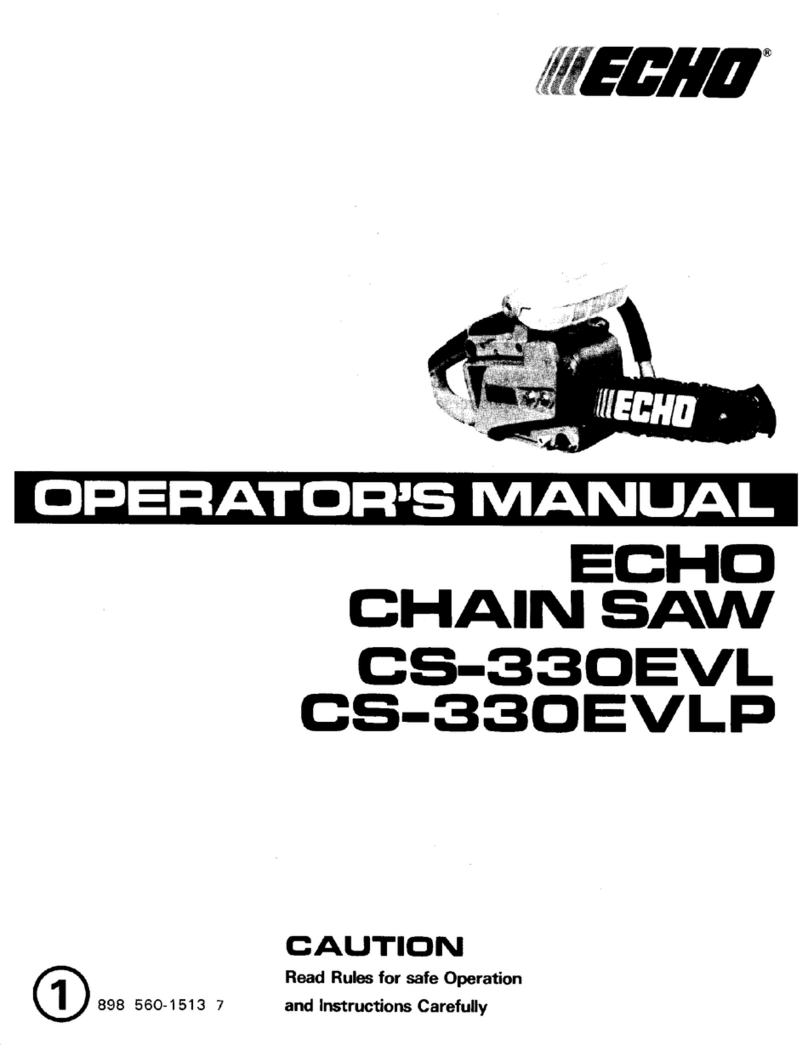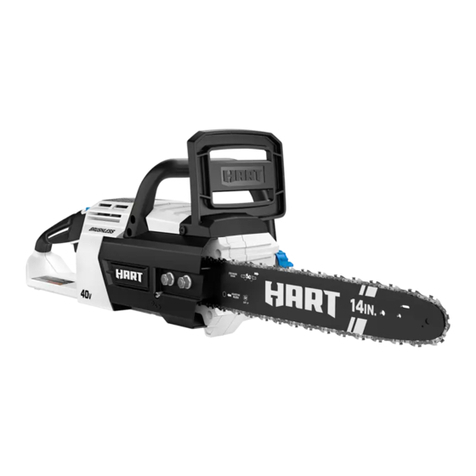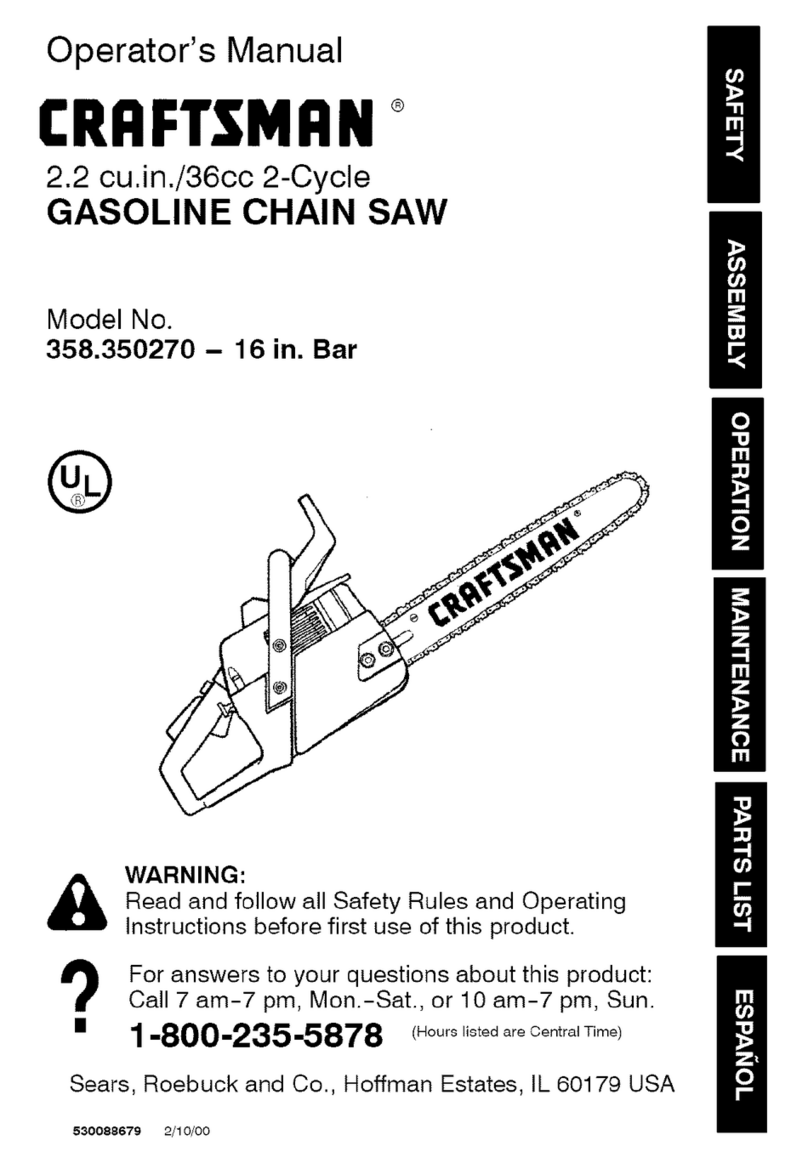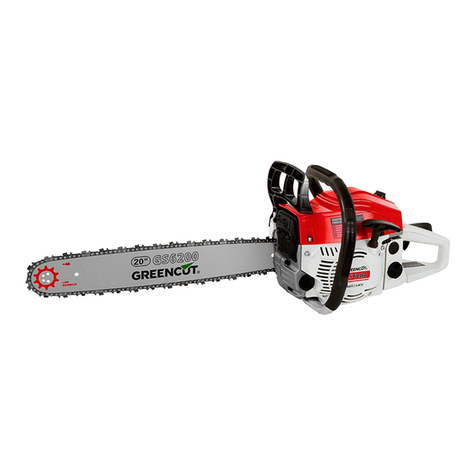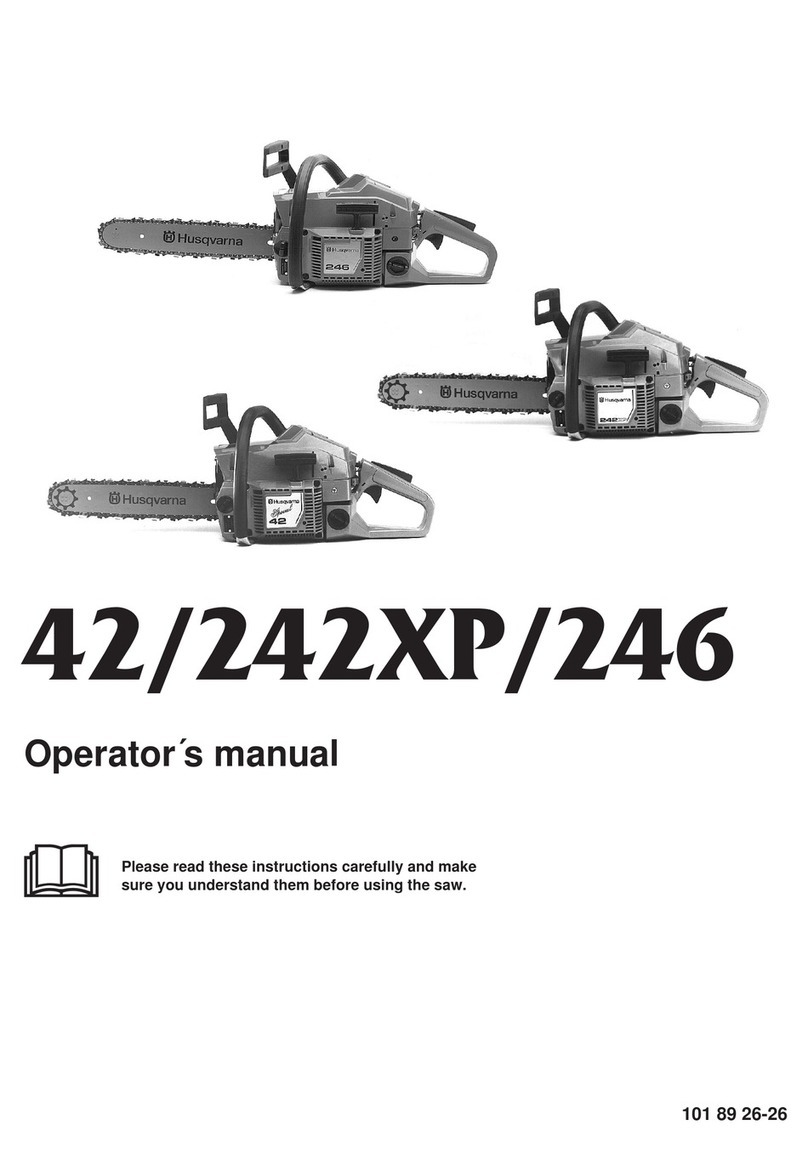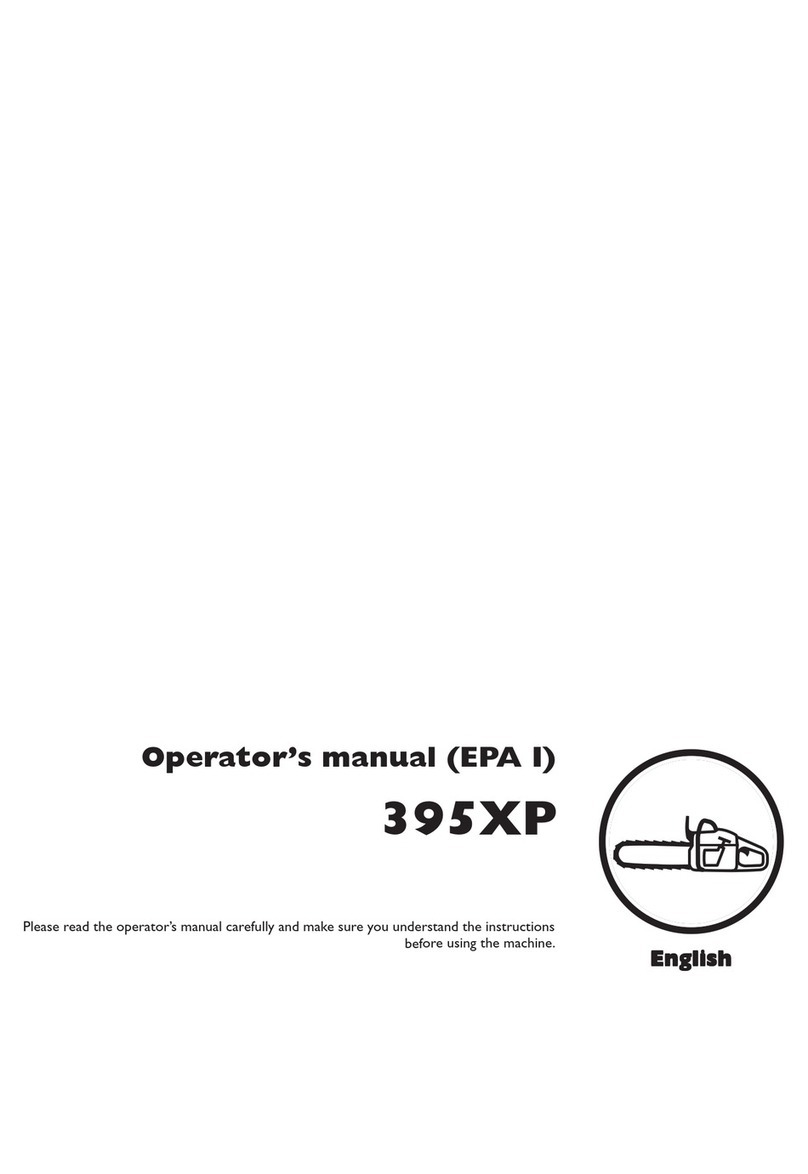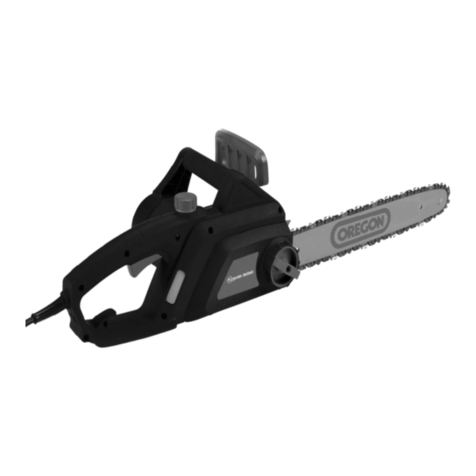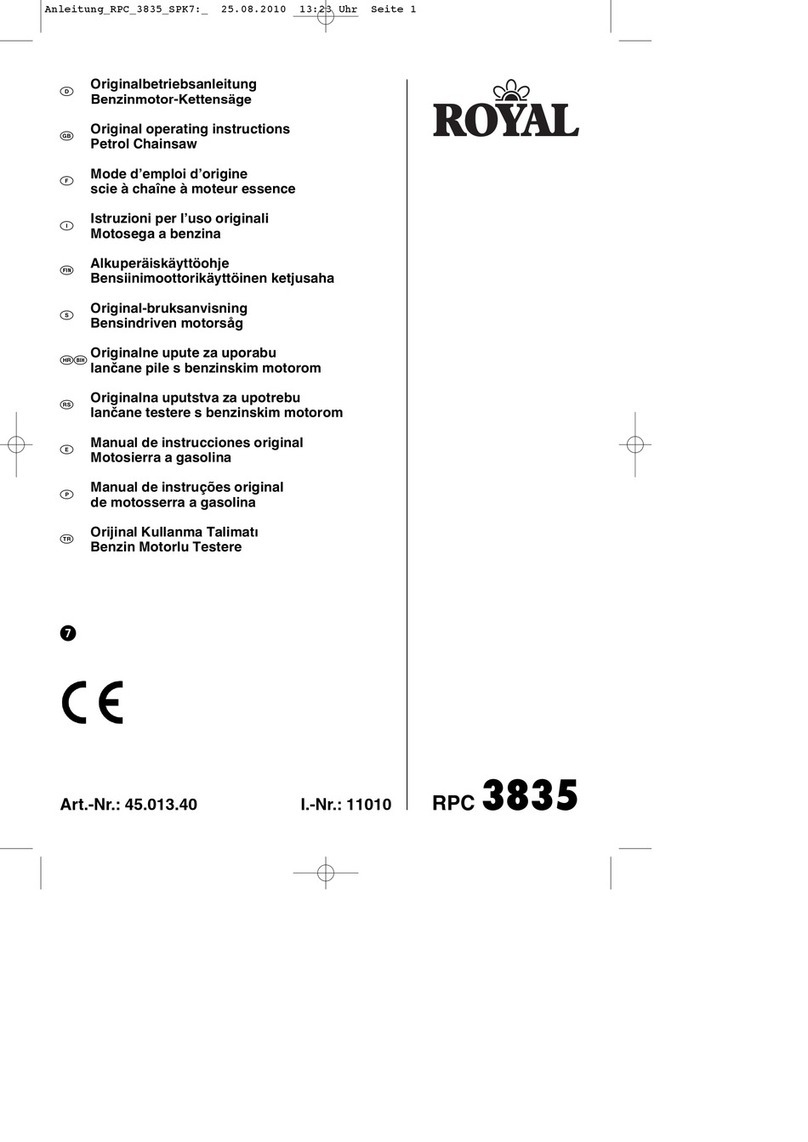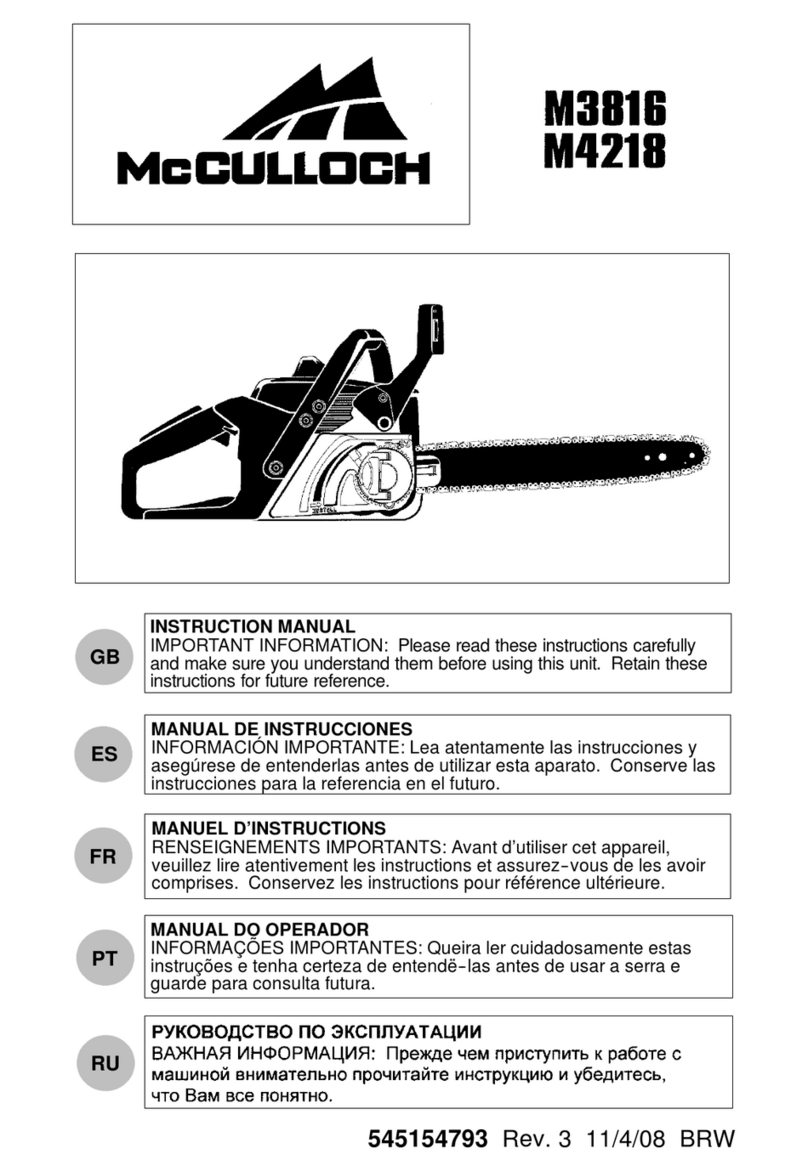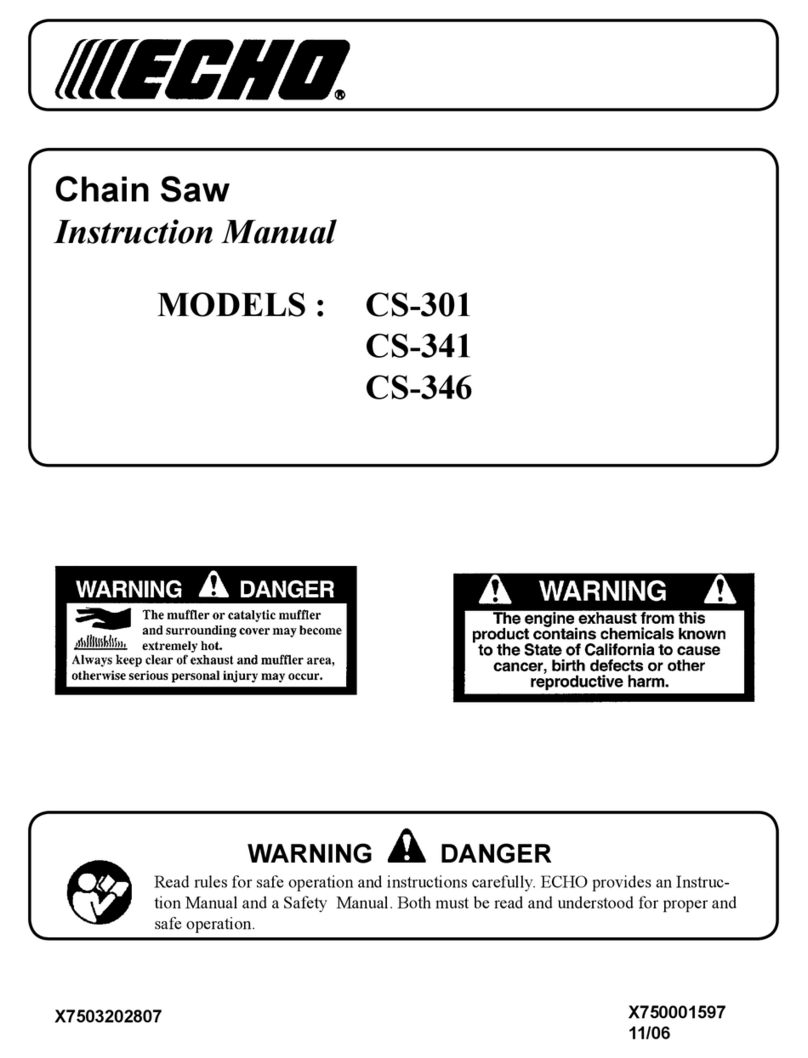4. For safe operation
1. Never operate a chain saw when you are
fatigued, ill, or upset, or under the
influence of medication that may make
you drowsy, or if you are under the
influence of alcohol or drugs.
2. Use safety footwear, snug fitting clothing
and eye, hearing and head protection
devices.
3. Always use caution when handling fuel.
Wipe up all spills and then move the
chain saw at least ten(10) feet(three(3)
m) from the fueling point before starting
the engine.
3a) Eliminate all sources of sparks or
flame (ie. smoking, open flames, or
work that can cause sparks) in the
areas where fuel is mixed, poured, or
stored.
3b) Do not smoke while handling fuel or
while operating the chain saw.
4. Do not allow other persons to be near
the chain saw when starting the engine
or cutting a wood. Keep bystanders and
animals out of the work area. Children,
pets, and bystanders should be a
minimum of thirty(30) feet away when
you start or operate the chain saw.
5. Never start cutting until you have a clear
work area, secure footing, and planned
retreat path from the falling tree.
6. Always hold the chain saw firmly with
both hands when the engine is running.
Use a firm grip with thumb and fingers
encircling the chain saw handles.
7. Keep all parts of your body away from
the saw chain when the engine is
running.
8. Before you start the engine, make sure
the saw chain is not contacting anything.
9. Always carry the chain saw with the
engine stopped, the guide bar and saw
chain to the rear, and the muffler away
from your body.
10. Always inspect the chain saw before
each use for worn, Ioose, or changed
parts. Never operate a chain saw that is
damaged, improperly adjusted, or is not
completely and securely assembled. Be
sure that the saw chain stops moving
when the throttle control trigger is
released.
11. All chain saw service, other than the
items listed in the Operator’s Manual,
should be performed by competent chain
saw service personnel. (e.g., if improper
tools are used to remove the flywheel, or
if an improper tool is used to hold the
flywheel in order to remove the clutch,
structural damage to the flywheel could
occur which could subsequently cause
the flywheel to disintegrate).
12. Always shut off the engine before setting
it down.
13. Use extreme caution when cutting small
size brush and saplings because slender
material may catch the saw chain and be
whipped toward you or pull you off
balance.
14. When cutting a limb that is under
tension, be alert for spring back so that
you will not be struck when the tension in
the wood fibers is released.
15. Keep the handles dry, clean and free of
oil or fuel mixture.
5
